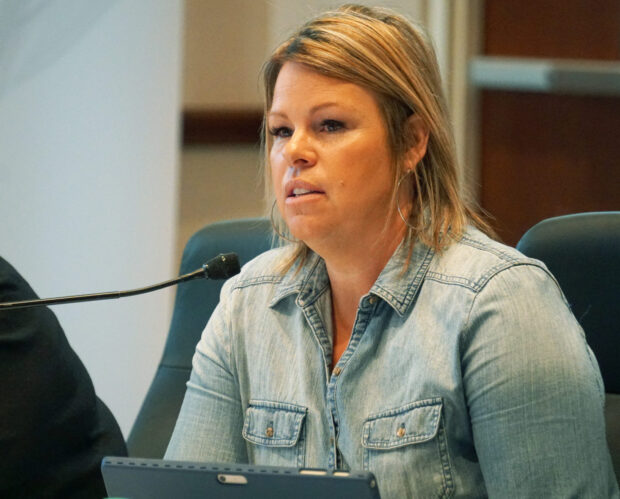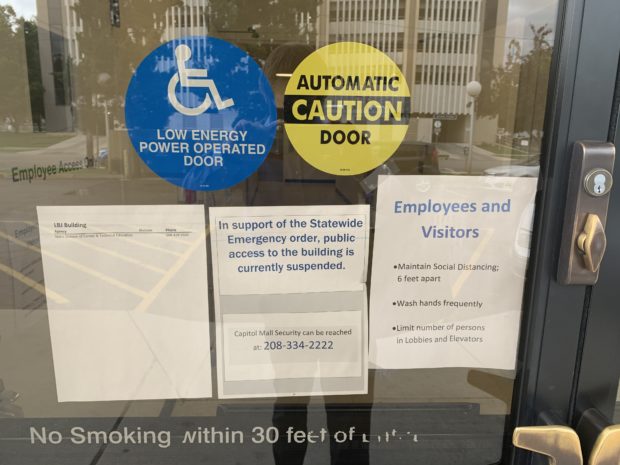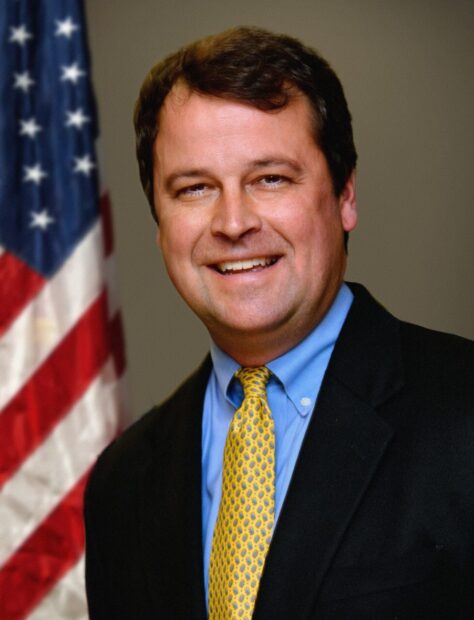Rather than streaming its meetings publicly as it had for the past month, the State Board of Education required anyone who wanted to follow a strategic planning meeting Wednesday to attend in person at its Boise office.
This occurred despite the fact that Gov. Brad Little is discouraging all public and private gatherings amid the coronavirus pandemic.
Several State Board members — including State Superintendent of Public Instruction Sherri Ybarra, Shawn Keough, Emma Atchley, Linda Clark and Dave Hill — were allowed to attend the nearly six-hour meeting via video conferencing, to maintain physical distancing.
Others — including President Debbie Critchfield and State Board members Andrew Scoggin and Kurt Liebich — attended the meeting in person, leaving at least one empty seat between them to keep their distance.

Idaho Education News made a last-minute request Wednesday morning for a dial-in code or a web link to video conferencing, to allow the public to follow the meeting remotely. According to three State Board officials, including Critchfield, the public could watch or listen to the meeting only by attending in person.
Once the meeting began, the public and news media were allowed to sit in an indoor conference room to watch a live video feed, while the meeting took place in the next room.
The situation likely does not represent an open meeting issue, because the State Board made an agenda available in a timely manner, and allowed the public to watch in person.
However, the meeting raises transparency questions as the State Board wrestles with policy decisions surrounding the pandemic. And the meeting might have not aligned with the first stage of Little’s Idaho Rebounds plan, the document the State Board cited May 4 when it revised its criteria for reopening schools.
According to the first stage of the plan, which is in place statewide through Friday, “Gatherings, both public and private, should be avoided.”
The second stage, tentatively scheduled to run Saturday through May 29, would allow gatherings, public or private, of fewer than 10 people.
Only three people — a reporter from Idaho EdNews, a State Board spokesman and a lobbyist — attended the meeting in the conference room. Several bottles of hand sanitizer were provided and tape was placed over every other chair to maintain physical distancing.
The conference room had 19 open seats. It was not clear if the State Board had a plan for a large, unexpected crowd.
Normally, only a handful of people attend State Board meetings. But hundreds of people have watched live feeds of previous meetings over the past month, perhaps signaling increased public interest in the midst of school closures.

The State Board is housed in the Len B. Jordan office building. Its main entrance was closed Wednesday. But a State Board spokesman posted Wednesday’s agenda, and a Friday news release instructing the public to use the building’s side door.
That entrance was unlocked Wednesday, but one sign on the door read, “In support of the statewide emergency order, public access to the building is currently suspended.”
Next to it, another paper sign read as follows:
“Employees and visitors
- Maintain social distancing six feet apart
- Wash hands frequently
- Limit the number of persons in lobbies and elevators.”
Wednesday’s meeting represented a departure from the State Board’s most recent practices. Over the past month, the board has made its regular and special meetings available to the public for live streaming on its Facebook page.
Wednesday’s meeting was conducted over video conference, so the State Board could have chosen to stream the meeting or provide a dial-in code. The State Board never made a stream available.
During a brief conversation with Idaho EdNews during a break Wednesday, Critchfield and spokesman Mike Keckler said they had not received any negative feedback about the meeting setup prior to Tuesday night, and thus felt comfortable conducting the meeting as planned. Keckler also said he doesn’t remember anybody attending the State Board retreat in previous years, and was not expecting much interest Wednesday.
This is the third transparency issue involving recent State Board meetings:
- On March 23, when the State Board issued its original four-week school closure, its conference call could not handle the influx of Idahoans who tried to dial in. An Idaho Education News reporter attended the meeting in person after being denied access over the phone. It is unclear how many other people tried to get on the conference call but couldn’t.
- On April 20, the Facebook Live feed set up to broadcast the State Board meeting failed. There was no public option for attending in person, and the State Board proceeded with the meeting knowing its feed was not broadcasting. That might have broken Idaho’s open meeting law, and State Board members reconvened and conducted a do-over of each of its votes days later to address the situation.
Strategic planning
During the retreat Wednesday, the State Board put its strategic plan under the microscope and debated its strategies, goals and values in a six-hour debate about the future of education.
The board did not take any final action.
Board members debated big-picture topics such as the value of education, the role of accountability, access, affordability, equity and the future of school, both during and post-coronavirus pandemic.
It was a jumping off point following a February retreat, and the kind of deliberative strategy session that Critchfield called for more of after being elected board president in 2019.
Several themes emerged as facilitator David Barkan guided the conversation.
Barkan, a consultant who specializes in government and education sectors, urged the board to avoid jargon and clichés and keep its mission statement short.
“A year from now, everybody should be able to close their eyes and say the mission statement,” he said.
When it comes to the future of school, Ybarra and Liebich pushed hard for a blended model emphasizing connectivity, student devices and professional development. With so many questions surrounding a return to school for 2020-21, and a potential for a spike in coronavirus cases, both said the time to act is now.

“We’ve got to, as quickly as possible, move to a blended learning model with four legs of the stool — one-to-one (devices), connectivity for kids, we have got to have a robust learning management system in all districts and we’ve got to make an investment in professional development,” Liebich said. “That’d be my top priority.”
Board members also grappled with accountability. Some, including Liebich, wanted to emphasize student growth and improvement over raw proficiency scores or percentages.
Others questioned whether to include Idaho’s goal to get 60 percent of its 25- to 34-year-olds to obtain a postsecondary degree or certificate. Idaho has struggled to move the needle on the goal for much of the past decade.
And some State Board members said accountability plans can be weaponized or used as a punishment. They pointed to the specific proficiency benchmarks the board incorporated into Idaho’s plan to comply with the federal Every Student Succeeds Act.
At least three times, board members referenced Idaho EdNews articles that have pointed out that the state has never met any of the 22 English and math interim targets from the ESSA plan.
“A lot of times, when there is no news, that becomes the news,” Ybarra said. “We spent a lot of time trying to defend ourselves.”
The State Board also entered into a closed-door executive session at 2 p.m. Wednesday. Ybarra, who sued her colleagues on the State Board and the Legislature last month, recused herself from the discussion so other board members could freely discuss litigation and legal strategies.
The State Board is scheduled to conduct another executive session at 8 a.m. Thursday.
